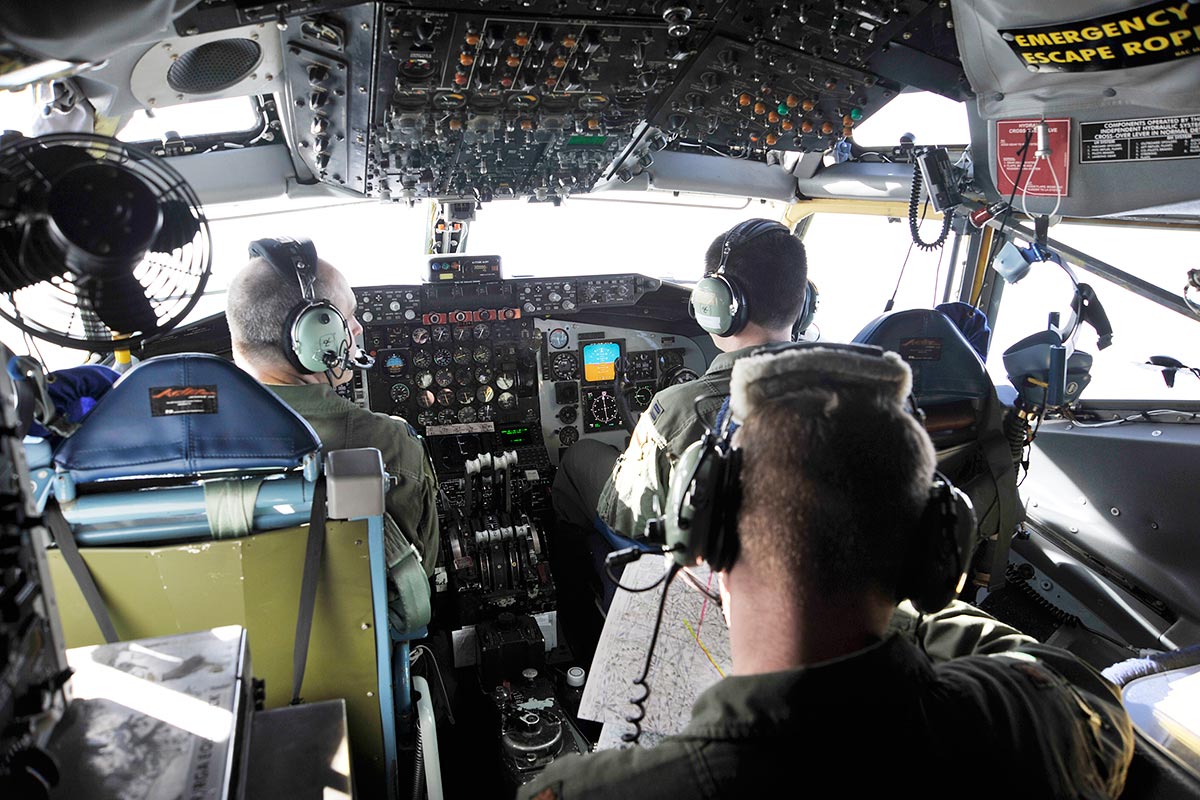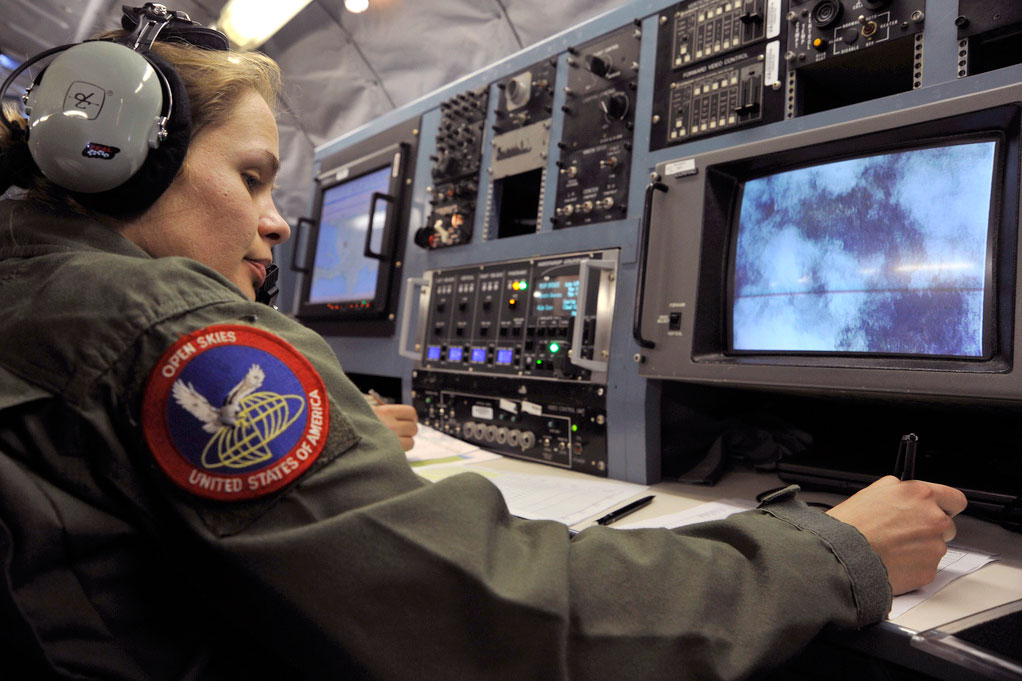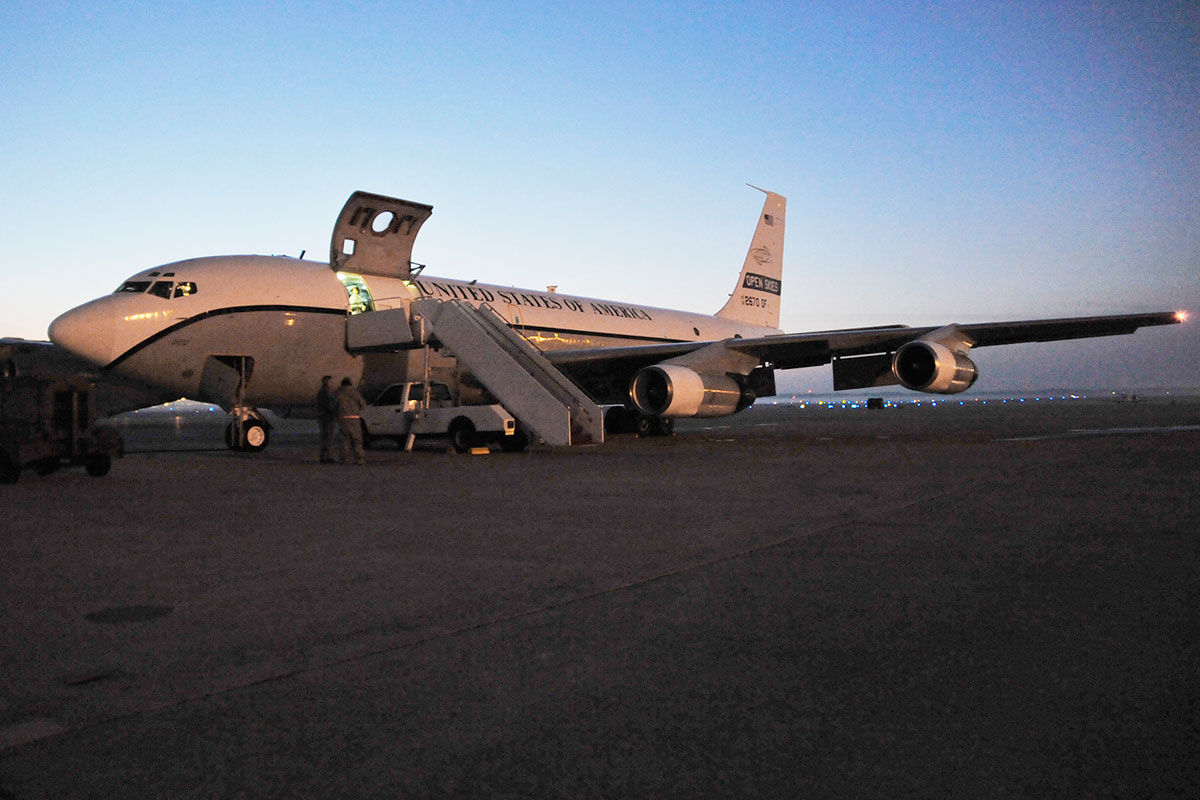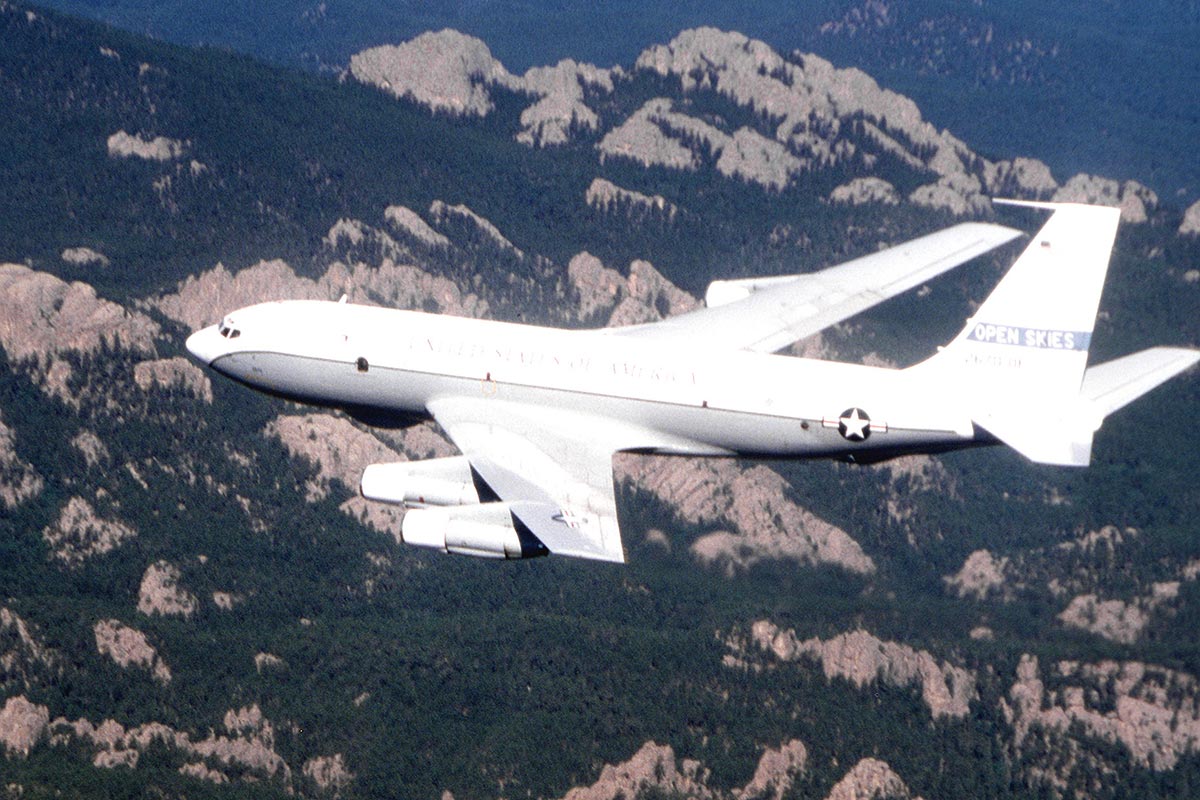Contractor: Boeing Military Airplanes Div.
Service: United States Air Force
Power Plant: Four Pratt & Whitney TF33-P-5 Turbofans with thrust reversers
Speed: 500 mph
Range: 3,900 miles
Crew: (flight crew), seven (augmented crew) - three pilots, two navigators, and two sensor maintenance technicians; (DTRA mission flight crew), one mission commander, one deputy mission commander, two sensor operators and one flight follower
The U.S. Air Force operates two modified Boeing 707 aircraft as part of the 1992 Open Skies treaty which allows 26 countries unrestricted overflight of domestic airspace to monitor military developments.
Since its primary mission is to take pictures, most of the installed equipment and systems provide direct support to the cameras and the camera operator. Work on the aircraft also included installing an auxiliary power unit, crew luggage compartment, sensor operator console, flight following console and upgraded avionics.
The interior seats 35 people, including the cockpit crew, aircraft maintenance crew, foreign country representatives and crew members from the Department of Defense's Defense Threat Reduction Agency.
Cameras installed include one vertical and two oblique KS-87E framing cameras used for low-altitude photography (approximately 3,000 feet above the ground), and one KA-91C panoramic camera, which scans from side to side to provide a wide sweep for each picture (used for high altitude photography at approximately 35,000 feet).
The data annotation and recording system, or DARMS, processes navigational, altitude, time and camera signals to annotate each picture with correct position, altitude, time, roll angle and other information. In addition, this system records every picture taken according to camera, frame and navigational position and downloads this data to a 3.5-inch floppy disk. A keyboard with trackball is the input device for operation of this system. Two Barco 12-inch VGA color monitors display camera annotation and other camera data on screen for the sensor operator and observer use.
Camera control, located in the sensor operator's console, operates and adjusts individual cameras for cloud cover, frame overlap and other functions. The sensor operator console seats four and has all the equipment listed above plus camera bay heating control, chronometers, emergency oxygen, interphone and individual lighting. The flight following console also seats four and includes most of the equipment listed above except for DARMS and camera controls.
Seven commercial Norcoid Tek II coolers with individual refrigeration units maintain temperature and humidity control to maintain peak film performance. The units can be removed, if necessary, from the aircraft in order to transport film. The coolers are capable of storing 40,000 feet of film.
The aircraft flies on its intended flight path throughout the entire mission with no reliance on ground-based navigation devices. A top-of-the-line commercial system, Litton 92 INS/GPS, which is an integrated inertial navigation system with a global positioning system or GPS, provides continuous updates. The GPS updates the INS several times per second to correct any deviations in the flight path. The INS also feeds precise latitude, longitude, time, roll angle and barometric altitude to the DARMS and camera systems. A true airspeed computer feeds true airspeed data to the INS.
A combined altitude radar altimeter provides precise height above ground information to the pilot for navigational purposes as well as a signal to DARMS for film annotation. It is accurate from 0 to 50,000 feet above the ground level. Plus, a metric altimeter is installed on the pilot's instrument panel for altitude reference when flying in countries that use meters for altitude reference.
The aircraft have been upgraded with the Block 35 Pacer Crag Navigational System, a first step in making them compliant with ICAO mandated Global Air Traffic Management and Global Air Navigation Standards guidelines.
Other modifications support the aircrew. A gaseous oxygen system replaced the liquid oxygen system to be more compatible with foreign airfields, and fluorescent lighting system was added throughout the cabin to provide adequate lighting for operation and inspections. Four upgraded seats with a conference table, interphone, lighting and oxygen system comprise the mission commanders' station for both country's mission commanders.
The Open Skies Treaty was first proposed by President Dwight Eisenhower to Soviet Premier Nikita Krushchev at the Geneva Conference of 1955. The Soviets rejected the concept and it lay dormant for a generation. In May 1989, the U.S. reintroduced the idea of Open Skies as an instrument of confidence building.
The Treaty enhances mutual understanding and confidence by giving all participating countries, regardless of size, a direct role in gathering information about military forces and activities of concern to them. It permits short-notice, unrestricted aerial observation flights over the territory of each signatory.
The aircraft are assigned to Air Combat Command at the 55 Wing, 45th Reconnaissance Squadron, Offutt Air Force Base, Neb., for operations, training and maintenance. When tasked, ACC 's role is to transport a DTRA observation team to an Open Skies point of entry airport, and conduct the observation flight, then return the team to the continental United States.
Three OC-135Bs were modified by the Aeronautical Systems Center's 4950th Test Wing at Wright-Patterson AFB, Ohio. The first initial operational capability (IOC) OC-135B was assigned to the 24th Reconnaissance Squadron, at Offutt AFB, Neb., in October 1993. The IOC aircraft was placed in permanent storage at Aircraft Maintenance and Regeneration Center at Davis Monthan AFB, Ariz. Two fully operational OC-135B aircraft were delivered in 1996.















